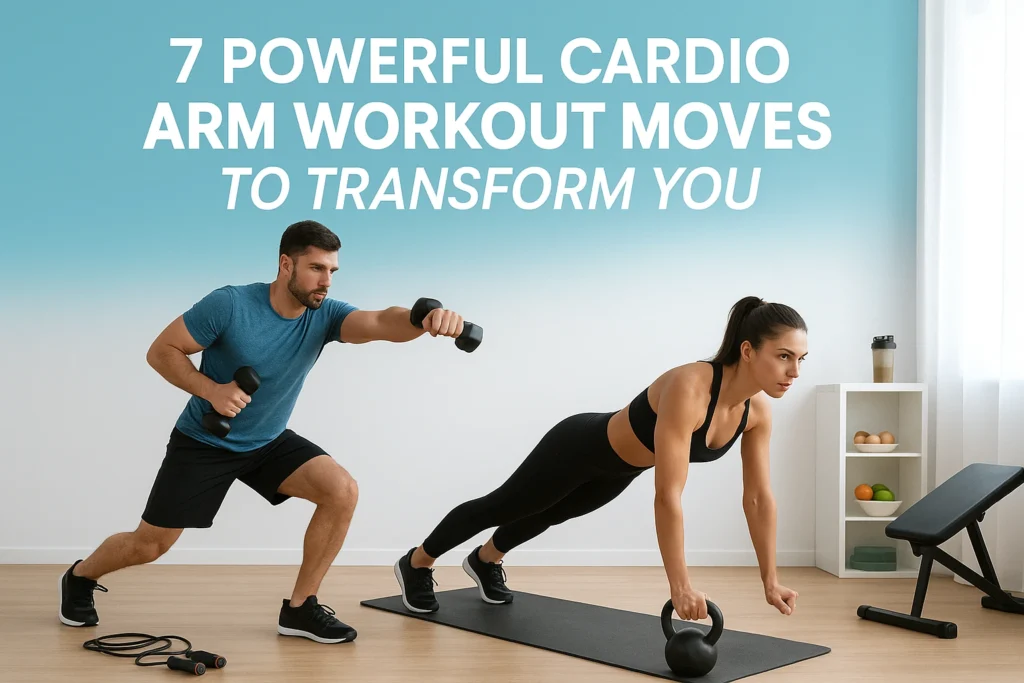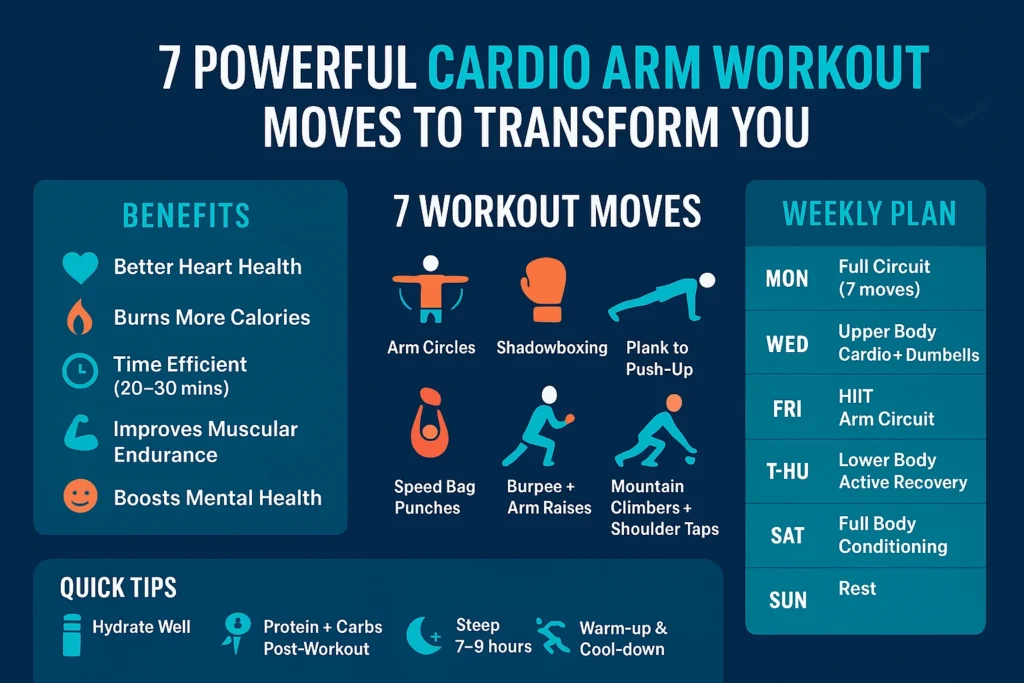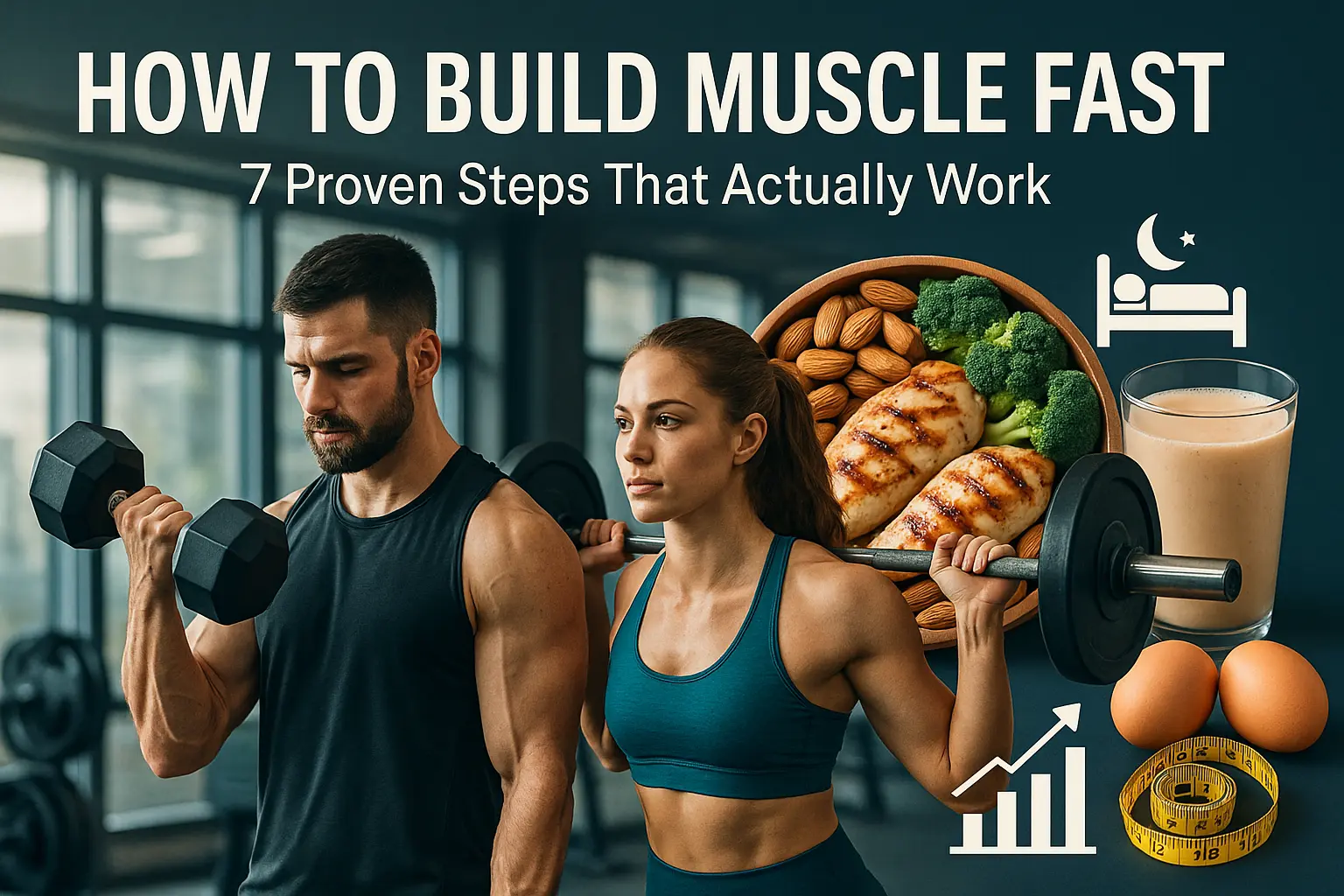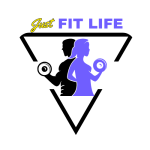Check out
How to Build Muscle Fast: 7 Proven Steps That Actually WorkWith busy schedules, it can be hard to find time to go to the gym, but everyone wants toned, strong arms that look great and work even better. A cardio arm workout fixes this by combining fat-burning cardio with targeted arm strengthening in one effective session. This method has two benefits: it raises your heart rate to burn calories and shapes your biceps, triceps, and shoulders. These dynamic movements turn regular workouts into full-body experiences that get the most out of your time, whether you work out at home without equipment or use dumbbells for extra resistance.
This article talks about seven great moves that make up a good cardio arm workout. Readers will learn how to do each exercise correctly, why cardio and arm training are beneficial together, and how to make a weekly routine. By the end, anyone can confidently add these moves to their fitness routine and see real changes in the strength, definition, and overall health of their arms and heart.

- The magic of combining cardio exercises with focused arm training is that they work out many parts of the body at once. Cardio arm workouts, on the other hand, focus on lower body movements like running or cycling. Traditional Cardio arm workouts, on the other hand, use slow, controlled movements to work out specific muscles. When you combine these two methods, they work together to keep your heart rate up and your arms constantly stimulated during the whole session.
- To keep the speed and intensity up, upper body cardio moves need your arms to be working all the time. In contrast to static strength exercises, where muscles rest between sets, continuous motion keeps blood flowing to working muscles, which increases their ability to last longer. This constant effort makes the heart and lungs work harder, which burns a lot more calories than doing exercises alone.
- Upper body cardio arm workouts at home use up a lot of energy, which causes an after burn effect called excess post-exercise oxygen consumption. This means that the body keeps burning calories at a high rate for hours after the workout is over. When you do arm contractions over and over again, they help build muscle. This dual mechanism helps you lose fat and define your muscles at the same time.
Another benefit is that it helps with functional movement patterns. In real life, muscles don’t usually work alone. For example, carrying groceries, lifting kids, or pushing heavy doors all require the coordinated effort of several muscle groups. Cardio arm workout with no equipment mimic these natural movements, which improves overall functional fitness and builds strength.
Knowing all the benefits helps keep you motivated during tough training periods. The benefits go beyond looks to include better health and performance every day.
- Better heart health: Cardio for the upper body raises the heart rate, which strengthens the heart muscle, improves circulation, and increases lung capacity. Upper body cardio Exercises that don’t involve moving your legs provide the same heart health benefits as traditional lower-body exercises.
- Time efficiency: A well-planned circuit workout that includes arm-focused movements can improve both cardio and strength in just 20 to 30 minutes, making it easy to fit into busy schedules.
- More calories burnt: HIIT- style arm circuits put a lot of stress on your metabolism, which means they burn many calories during and after the workout. This mix makes it easier to lose fat and gain muscle at the same time.
- Better muscular endurance: Regular training makes it easier to carry heavy things, hold them over your head, or do the same thing over and over again.
- Boosts mental health: Cardiovascular exercise releases endorphins, and doing hard movements makes you feel better and lowers stress.
These seven moves are the basis of a successful routine. Each one works on a different part of arm development while keeping the heart rate up.
- This simple but effective move strengthens the shoulders and raises the heart rate quickly. For 30 seconds, make small, controlled circles forward with your arms at shoulder height. Then, turn around and do the same thing. The constant tension puts a lot of stress on the deltoid muscles. Make the circles bigger or add light dumbbells to make it harder. This is a great warm-up exercise that gets your shoulders ready for harder work.
You can get better at fighting by shadowboxing even if you don’t know martial arts. Basic punches like jabs, crosses, hooks, and uppercuts work your biceps, triceps, and shoulders while also requiring your core to be stable. Each punch should go all the way through with a little bit of torso rotation, which will engage the whole kinetic chain. For the first minute, do rounds of 1 minute each, combining punches into sequences like jab-jab-cross-hook for 30 to 60 seconds. This is an example of a cardio arm workout that doesn’t need any equipment, takes up very little space, and gives you the best results.
This moving plank exercise turns a static plank into a heart-pumping workout that works the chest, triceps, and core. To get to the high plank position, start in the forearm plank and press up on one hand, then the other. Then, go back down. The transition phase makes it challenging to stay stable because the weight moves from one arm to the other, and the core keeps the hips from rotating. Do 30 to 45 seconds of continuous work, using slow transitions for strength or faster reps for cardiovascular demand. Beginners can do it on their knees, but experts might add resistance bands around their wrists.
With your hands at chest level and your elbows bent, throw quick punches forward like you’re hitting a speed bag. Instead of power, focus on speed and keep a quick, steady rhythm. This works the anterior deltoids and makes the biceps and triceps work together. Many repetitions—often more than 100 punches per minute—require a lot of stress on the body’s metabolism. Change the difficulty by moving your hands around or adding very light dumbbells (1–2 pounds at most). For each set, switch back and forth quickly between left and right for 30 to 60 seconds.
Burpees are a great way to work out your whole body, but if you add arm raises, they become a great way to work out your upper body. After doing a push-up, jumping back into plank, and standing up, raise your arms in front of you to shoulder height and then lower them back down. This makes the shoulders work right away after the push-up phase tires them out. Beginners can skip the push-up at first, but more advanced people might hold dumbbells while they raise their arms. Doing 10 to 15 reps is a fantastic way to finish a circuit.
Begin in a high plank position and quickly bring one knee towards your chest for 4–6 reps. Then, switch sides and tap the opposite hand to your shoulder. The shoulder tap needs a lot of core stability and arm strength to keep your balance while you lift one hand. The triceps and shoulders work hard to hold up the weight of the body on one arm for a short time. Quick taps and fast mountain climbers put more stress on the heart, while slower movements focus on strength. This is especially useful for HIIT workouts, which are 30 seconds of hard work followed by 15 seconds of rest, repeated for 6 to 8 rounds.
Traditional jump rope works the lower body, but changing the positions of your arms turns it into an advanced cardio arm workout with weights. Once you’ve got the basic rhythm down, switch between single-arm swings, crossovers, or side swings that focus on different angles of your arms. In single-arm variations, you swing the rope handle with one hand while the other hand copies the motion. This isolates one arm while keeping the rhythm. To do crossover movements, cross your arms while jumping, then uncross them for the next rotation. If you don’t have real jump ropes, you can do jumping and arm-swinging movements while holding small dumbbells or resistance bands.
| Move | Primary Muscles | Equipment | Difficulty | Best For |
|---|---|---|---|---|
| Arm Circles | Shoulders | None / Light dumbbells | Beginner | Warm-up, endurance |
| Shadowboxing | Biceps, triceps, shoulders | None | Beginner – Intermediate | Cardio intensity |
| Plank to Push-Up | Triceps, chest, core | None / Resistance bands | Intermediate | Strength & stability |
| Speed Bag Punches | Shoulders, biceps, triceps | None / Light dumbbells | Intermediate | Speed & coordination |
| Burpee + Arm Raises | Full body, shoulders | None / Dumbbells | Advanced | Maximum calorie burn |
| Mountain Climbers + Taps | Triceps, shoulders, core | None | Intermediate – Advanced | HIIT training |
| Jump Rope Variations | Shoulders, forearms | Jump rope / Dumbbells | Intermediate – Advanced | Coordination & cardio |
Strategic programming makes sure that progress is steady while giving you enough time to recover. The best schedule strikes a balance between hard work and rest, keeping you from over training while keeping your momentum going.
- Monday: Do all seven moves in a circuit format for 40 seconds of work and 20 seconds of rest, three to four times.
- Tuesday: Do strength training for your lower body or light cardio for your legs only to give your arms a break.
- Wednesday: Focus on cardio for the upper body. Choose 4–5 moves and do 4 rounds with dumbbells that are a little heavier or at a faster pace.
- Thursday: Active recovery—gentle stretching, walking, or yoga
- HIIT arm circuit on Friday: 30 seconds of maximum effort followed by 15 seconds of rest, with 2–3 moves repeated for 15–20 minutes.
- Saturday: Conditioning for the whole body, including arm and lower body movements
- Sunday: Only very light activity or complete rest
This schedule gives you three focused days of arm training with enough time to recover between sessions. If you’re new to cardio arm workouts, you should start with two sessions a week and work your way up to three or four as you get stronger. The key is to pay attention to what your body is telling you and make changes as needed.
Changing up the equipment keeps people interested. One session might only use body weight exercises, another might use dumbbells, and a third might use resistance bands. This variety keeps the muscles from getting used to the same thing and makes sure that all of the arm muscles, including the biceps, triceps, and shoulders, grow at the same rate.
Using smart training methods speeds up progress and stops people from hitting common plateaus. These tips, which are based on research, will help you get the most out of every workout.
Make sure to follow the right warm-up steps before doing a lot of work with your arms. Five minutes of light cardio and then dynamic stretches get your muscles and joints ready for demanding movements. Arm circles, shoulder rolls, and light shadowboxing all help to increase blood flow and tissue temperature over time, which lowers the risk of injury by a lot.
Instead of rushing through reps, pay attention to the full range of motion. Full extensions and contractions make sure that all muscle fibers get enough stimulation. Partial movements may allow for more reps, but they may be less effective since they don’t engage all muscles.
Keep the same level of intensity during all work periods. To get the most out of the cardiovascular benefits, you need to keep your heart rate up, so don’t rest too much or move too slowly. If you’re too tired to keep your form, slow down a little instead of completely losing your technique.
For continued improvement, progressive overload is still important. Try to add 2–3 reps, lift a little more weight, or take shorter breaks each week. Over time, small, steady improvements add up to big changes.
After intense workouts, make sure to cool down properly. Gentle movement for five to ten minutes, followed by static stretching, helps get rid of metabolic waste and keeps you flexible. People often forget about this recovery work, but it has a big effect on soreness the next day and mobility in the long term.
Timing your meals can help you reach your training goals. Eating protein and carbs 30 to 60 minutes after working out is the best way to help your body recover and build muscle. Staying hydrated throughout the day keeps your performance up and helps your body handle the extra metabolic stress of regular training.


Identifying and fixing common mistakes saves time and keeps people from getting frustrated. Even with regular training, these mistakes happen too often to be helpful.
Not breathing properly: Holding your breath while doing intense movements can dangerously raise your blood pressure and lower your performance. When you work out, breathe out; when you relax, breathe in. This keeps the oxygen flowing and makes you more fit.
Training through sharp pain: Muscle burn from working out is not the same as joint pain or sharp, stabbing feelings. Ignoring warning signs can cause serious injuries that take a long time to heal. It’s okay to be uncomfortable, but pain needs to be dealt with right away.
Not taking rest days: Newbies who are too eager often train every day, thinking that more is always better. During recovery, not training, muscles grow and change. Not getting enough rest can cause over training syndrome, lower performance, and a higher risk of injury.
Bad posture while moving: Letting your shoulders hunch forward or your back arch is not safe or effective. Keeping your spine in a neutral position and your shoulders in the right place makes sure that the muscles you want to work get the right amount of stimulation while protecting weak structures.
Comparing progress to others: Everyone’s genetics, training history, and lifestyle factors make their response rates different. In four weeks, one person might see big changes, while another person might need twelve weeks to see the same changes. Instead of comparing yourself to others, work on improving yourself.
What cardio is best for arms?
The best cardio for arms includes shadowboxing, battle ropes, and speed bag punches, which elevate heart rate while engaging biceps, triceps, and shoulders continuously. Burpees with arm raises and mountain climbers with shoulder taps also provide excellent arm-focused cardiovascular training.
What is a cardio exercise?
A cardio exercise is any physical activity that elevates the heart rate and increases blood circulation throughout the body for an extended period. Examples include running, cycling, swimming, jumping rope, and high-intensity interval training that strengthen the cardiovascular system and burn calories.
What are high aerobic exercises?
High aerobic exercises are intense physical activities that significantly elevate heart rate and oxygen consumption, typically performed at 70-85% of maximum heart rate. Examples include sprinting, HIIT workouts, jump rope, burpees, mountain climbers, and fast-paced cycling or running that challenge cardiovascular endurance.
What are the 7 basic aerobic movements?
The 7 basic aerobic movements are marching (alternating knee lifts), jogging in place, jumping jacks, step touches (side-to-side steps), grapevines (crossover steps), knee lifts, and hamstring curls. These foundational movements form the basis of most aerobic routines and can be combined or intensified for varied workout intensity.
Is 30 minutes of cardio a day enough?
Yes, 30 minutes of moderate-intensity cardio daily is enough to meet health guidelines and provide significant cardiovascular benefits, including improved heart health, weight management, and increased endurance. For weight loss or advanced fitness goals, extending to 45-60 minutes or incorporating high-intensity intervals may yield better results.
A well-planned cardio arm workout builds strength, burns fat, and improves heart health all at the same time. People of all fitness levels can perform these seven powerful moves, which range from high-intensity arm circles to jump rope variations. These movements work for everyone, whether they like working out at home without equipment or adding dumbbells for an extra challenge.
To be successful, you need to work hard all the time, add more weight to your workouts, and recover smartly. Starting with two to three sessions a week gives the body time to adjust and helps you build habits that will last. As fitness improves and movements become more familiar, adding resistance, speeding up, or shortening rest periods will help you keep making progress towards your transformation goals.
